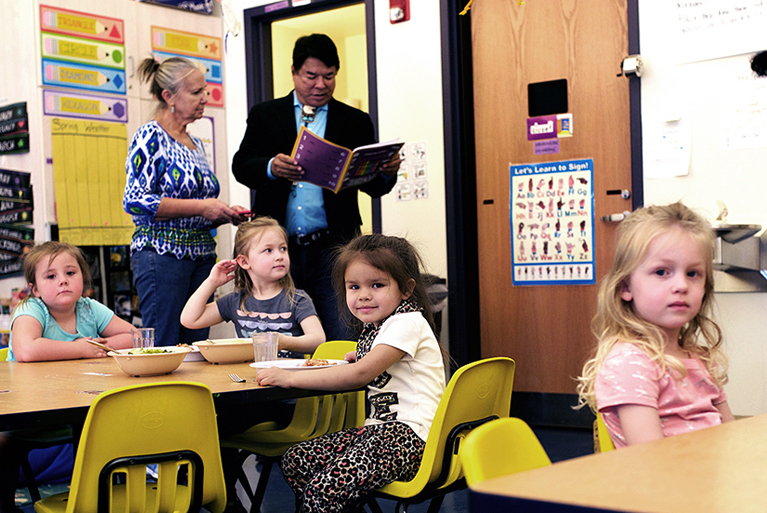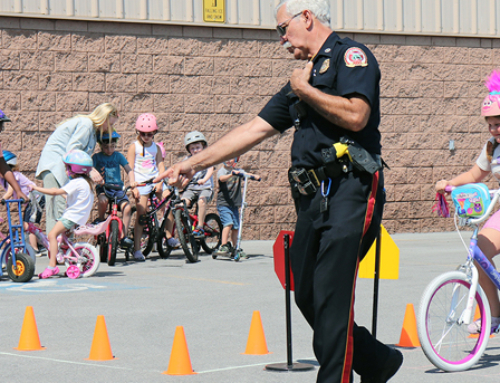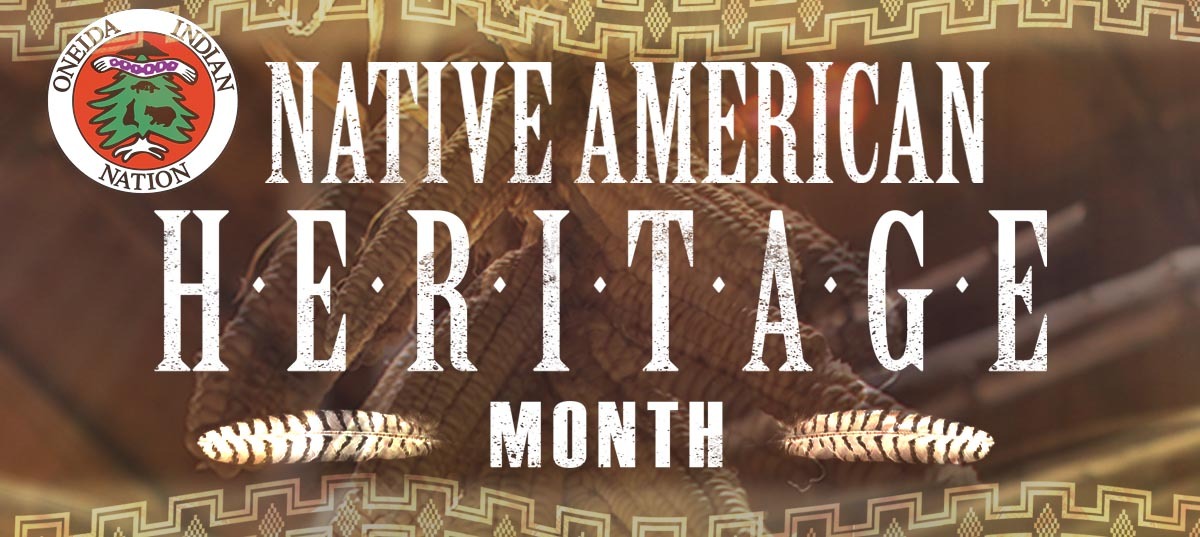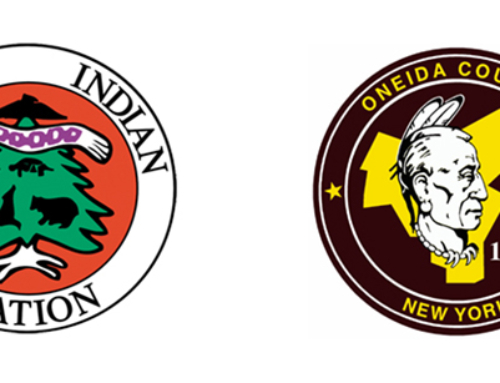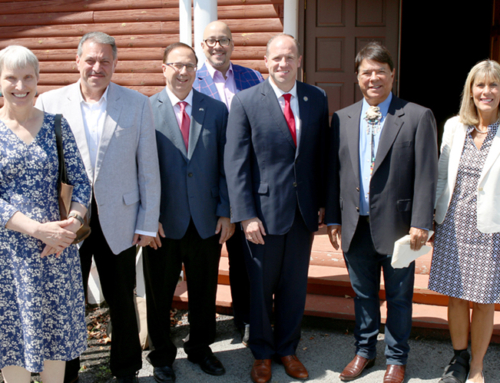Research has long suggested the ideal time to teach a new language is to 4-year-old students because young learners absorb so much information at this age.
With that in mind the Oneida Indian Nation Language program and Madison-Oneida BOCES (MOBOCES) are developing a curriculum and best practices to ensure all children at the Oneida Indian Nation Early Learning Center are learning the traditional language. With one-year of collaboration already behind them the staff at the Verona school is working on a plan to not only benefit the children, but include current Oneida language learners, teachers and ELC staff on how to bring Oneida to all.
“Daycare and language staff are meeting (with MOBOCES) to develop the best method to share the language with the children,” explained Randy Phillips, Oneida Indian Nation education programs assistant manager. Randy added the curriculum has shifted this spring to allow more daycare staff to reinforce the language. “Children don’t care if they make a mistake, unlike adults who may feel unsure. They don’t know they’re learning a language. They’re learning new words and phrases just as they would English.”
And that is something Edward Rinaldo, director of staff and curriculum development at MOBOCES, said the staff is building on, reviewing how best Oneida language can be taught, “…and how we can help Mary (Blau, Turtle Clan, and other teachers) create more structures to grow the language, to really foster the language. And the best way to do that is through teaching and focusing on younger students.”
“The early learners are the ones picking (the language) up early,” added Colleen Wuest, director of early childhood programs at MOBOCES. “They are becoming bilingual whether or not they use it. They are hearing it, repeating it, and using it throughout the day, which is beneficial for all. … This is a critical age for them to be able to retain it. Four-year-olds are very inquisitive. They’re basically sponges.”
So even if the pronunciation is difficult the little learners “want to imitate it. So when you put it into a song or rhyme, they easily get it. At this point they are absorbing it and retaining it,” Colleen said.
This is something Mary Blau (Turtle Clan) can attest is working saying the children, “react to the songs.”
“They absorb it somehow,” said Mary, who, by the way, is addressed by early learners as “Shekoli,” the Oneida word for hello. For example, Mary said they work on a song about squirrels with the children, and the word squirrel stuck with a particular student who then went on to share it with his sister and his mother. “The squirrel (tsikwil^:tu’), he climbs the tree. Then there’s this second verse where the caterpillars climb the tree. It was then when his mom said, ‘we have to work on the word for caterpillar.’”
“No one’s perfect,” said Mary. “The main concept is to understand each other. Our goal is not to produce fluent speakers, but to have people able to understand enough to carry a conversation. You can go through the center, and you hear ‘hanyo, hanyo — come on.’ These are just simple things that they hear all the time.”
Already Colleen as well as Maria Papa, staff development instructional specialist, has been busy observing staff and Oneida Language students in action with the different grade levels. The group plans to expand the language’s reach by adding phonetic spellings to visuals, and encouraging more take home materials featuring the language.
Today’s combined effort follows decades-long quest by the Oneida Indian Nation to develop the native language which ranged from 30-minute language classes, to immersion classes for adults, to intensive classes for both teachers and learners. Aside from the work by BOCES, students are already enjoying common materials displaying Oneida language such as coloring books, crayons and a Memory-style card game.
“The matching memory game featuring animals and other nouns is great for anyone trying to learn the language,” added Randy. “It’s a game, so kids learn despite of themselves.” Other language items available include a grocery list, greeting cards illustrated by student Chelsea Jocko (Wolf Clan) available at the Shako:wi Cultural Center, bookmarks, a Thanksgiving Address booklet to the state-of-the-art Oneida Basic language app available for free on iTunes. With all these items available and as more of this generation learns the better the chances Oneida Language will persevere.
Established in 1995, the Nation’s Early Learning Center provides the highest quality of care and education for children aged six weeks to 12 years. ELC teachers receive continuous child development training and have a solid background in early childhood education and development. The ELC is accredited by the National Association for the Education of Young Children, the nation’s largest organization of early childhood educators.


